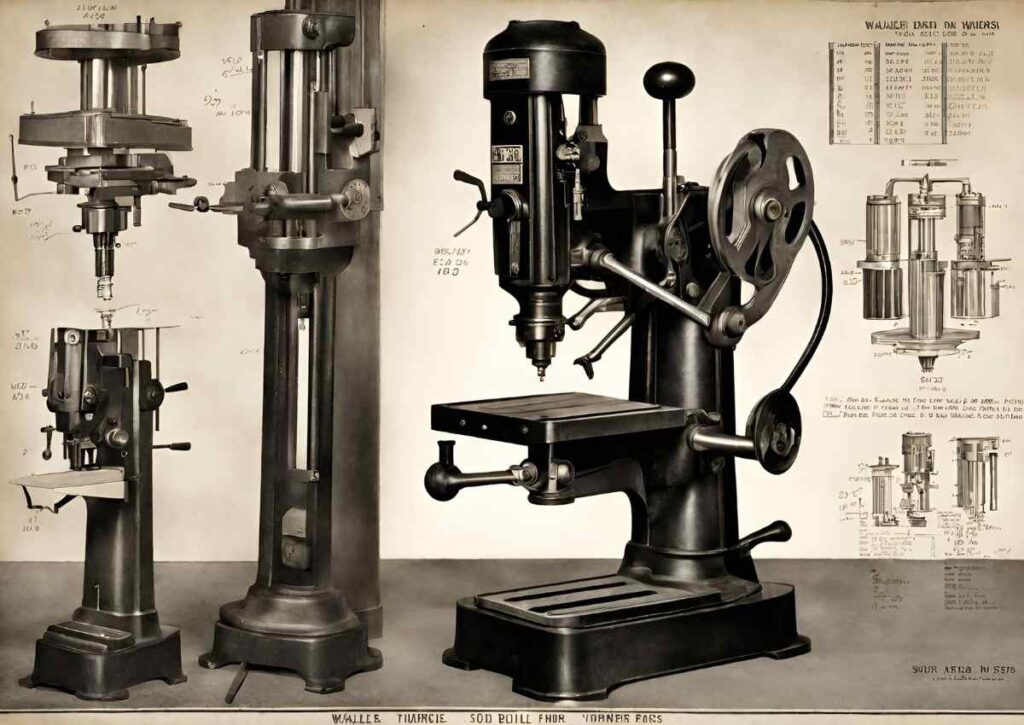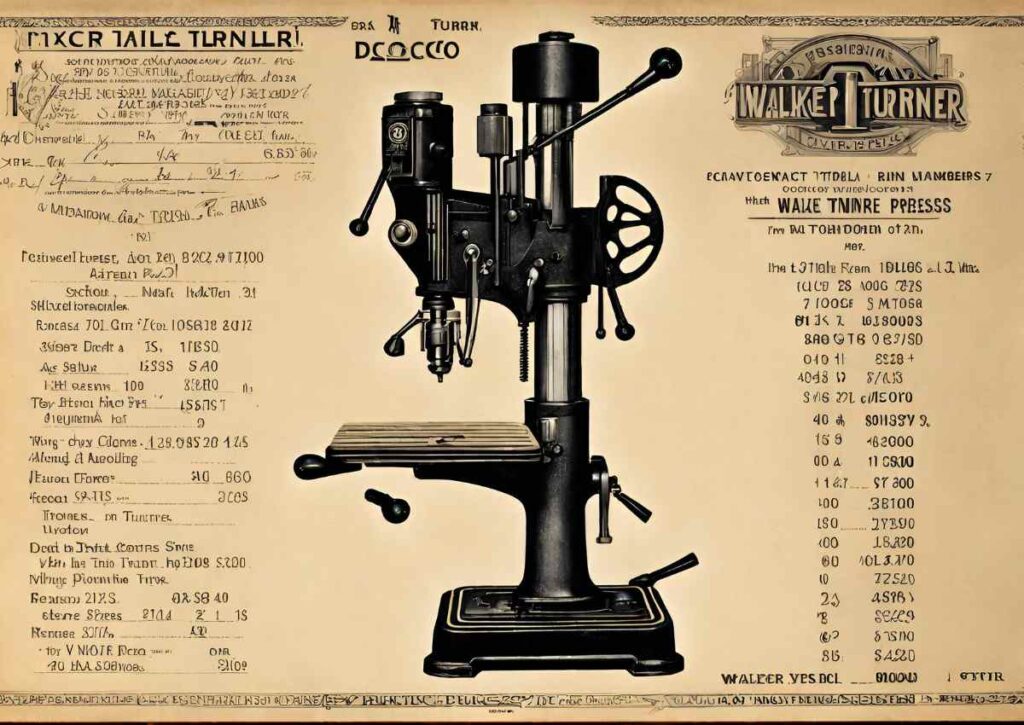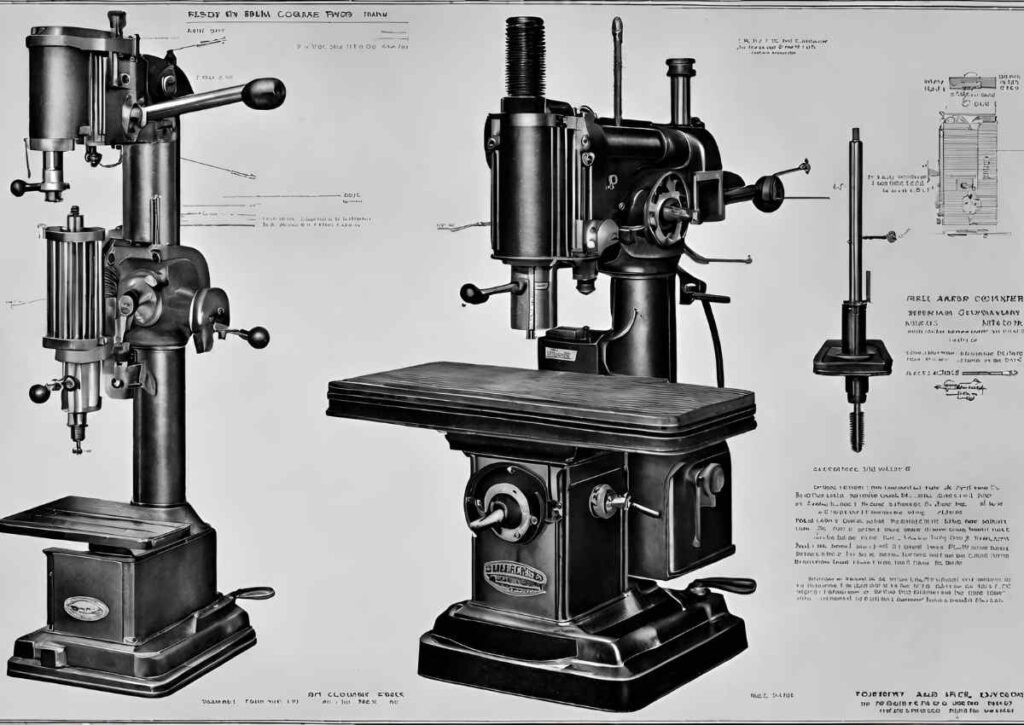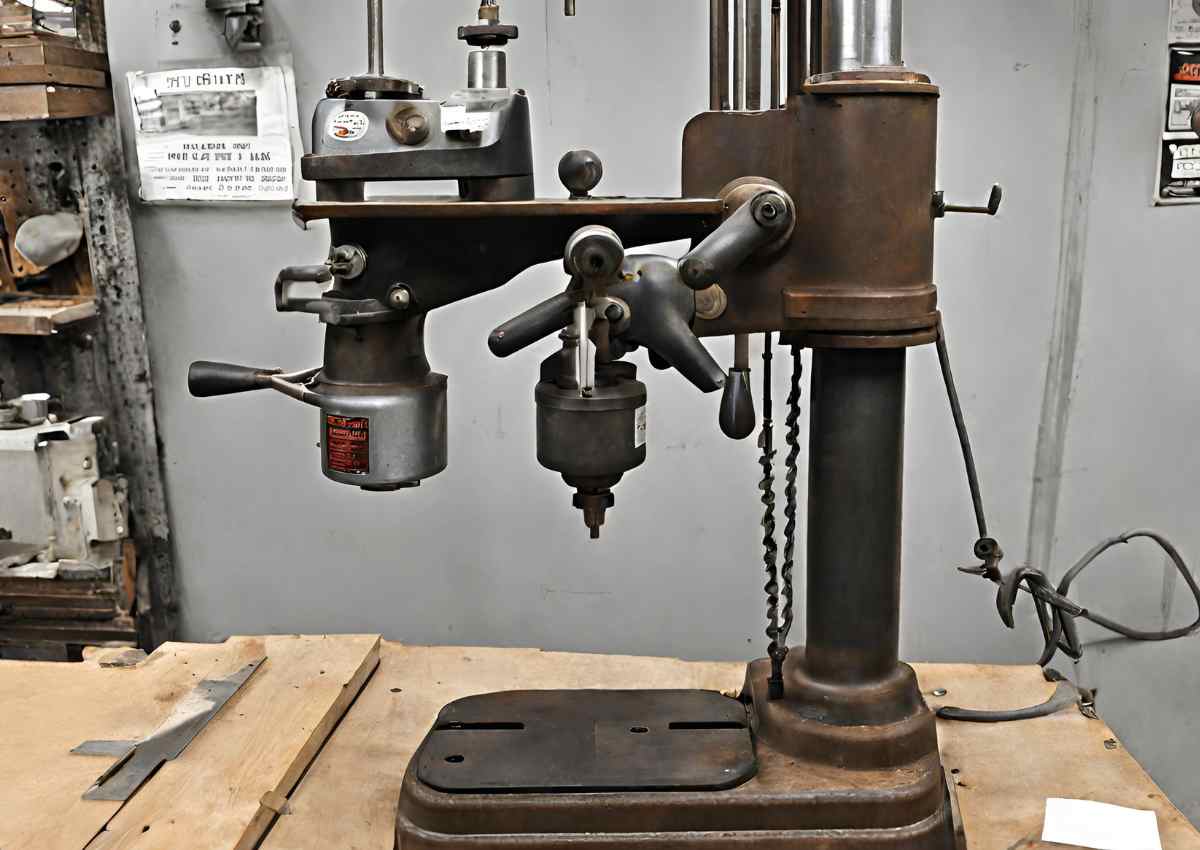Walker Turner, a company forged in the crucible of early 20th-century innovation, was the brainchild of Ernest T. Walker and William Brewer Turner.
Founded between 1927 and 1929, the company initially set its roots in Jersey City, New Jersey, later relocating to Plainfield in 1931.
Specializing in small, lightweight machines, Walker-Turner aimed to cater to the burgeoning home workshops of its time.
The Early Years
By 1934, Walker-Turner had already left an indelible mark with the introduction of the 500, 700, and 900 series, collectively known as “The Driver Line.”
The 1100 series emerged in 1936, marking a shift toward more robust and industrial-styled machinery.
The company’s growth was evident with the acquisition of the Rivoli Silk Hosiery plant in 1936 and the introduction of direct-geared motor drive machines in 1938.
Art Deco Redesign and Serial Numbers

In 1939, Walker-Turner embraced Art Deco redesigns for many of its series, concurrently venturing into custom multi-headed setups for drill presses.
This year also witnessed the introduction of serial numbers, adding a structured format where the final two digits often indicated the production year.
World War II and Post-War Era

During World War II (1942–1945), Walker-Turner redirected its production capacity to contribute to the war effort. This period saw the release of the 20″ D-1100 drill press.
In 1948, the company underwent a significant change, being acquired by Milwaukee machine tool maker Kearney and Trecker, becoming the “Walker-Turner Division of Kearney & Trecker.”
Serial numbers were revamped in 1950, and a new plant was erected in Plainfield in 1952.
Rockwell Era and Closure

A pivotal moment occurred in 1956 when Kearney & Trecker sold Walker-Turner to Rockwell Manufacturing Co.
Unfortunately, 1957 marked the end of an era as Rockwell ceased production in Plainfield, closing all former Walker-Turner facilities.
Production shifted to Bellefontaine, Ohio, and Tupelo, Mississippi.
Conclusion
The Walker-Turner drill press, born from a rich history of innovation and adaptation, has left an enduring legacy in the realm of machining.
From its humble beginnings in home workshops to its vital role in wartime production, the Walker-Turner drill press stands as a testament to precision, durability, and the ever-evolving landscape of industrial machinery.
FAQs
When was Walker Turner founded, and who were the founders?
Walker-Turner was founded between 1927 and 1929 by Ernest T. Walker and William Brewer Turner.
What marked Walker Turner’s initial focus in terms of the machinery they produced?
The company initially focused on crafting small, inexpensive, and lightweight machines designed for home workshops.
When did Walker Turner introduce the 500, 700, and 900 series, and what were they known as?
In 1934, Walker-Turner introduced the 500, 700, and 900 series, collectively known as “The Driver Line.”
How did Walker Turner contribute to the war effort during World War II?
From 1942 to 1945, Walker-Turner redirected its production capacity to support the war effort, with a focus on manufacturing machinery for wartime needs.
What significant change occurred in 1948 for Walker Turner, and who acquired the company?
In 1948, Walker-Turner was sold to Milwaukee machine tool maker Kearney and Trecker, becoming the “Walker-Turner Division of Kearney & Trecker.”
When did Rockwell Manufacturing Co. take over Walker Turner, and what ensued in 1957?
In 1956, Rockwell Manufacturing Co. acquired Walker-Turner. However, in 1957, Rockwell ceased production in Plainfield, closing all former Walker-Turner facilities.
Production moved to Bellefontaine, Ohio, and Tupelo, Mississippi.
What characterized Walker Turner’s machine redesigns in 1939, and which series retained the Art Deco design?
In 1939, Walker-Turner introduced an Art Deco redesign for many 700, 900, and 1100 series machines. Only the 900 and 1100 series band saws retained the 1939 Art Deco design.
When did Walker Turner release its first Radial Arm Drill Press, and what was its designation?
In 1942, Walker-Turner released its inaugural Radial Arm Drill Press, known as the RD-1170.









